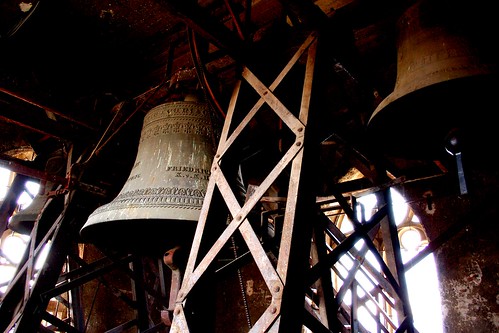We were in a church tower, high above a square in Sibiu, Transylvania when the bells began to toll. Loud? You bet — but it was the perfect way to experience them ringing. At close range you don’t just hear the bells, but the sound beneath the sound, the percussive strike of the clapper.
It’s sort of like a well hit nail. In the distance you listen to the pounding, but right in the room there’s the ring of metal on metal.
Forty-five hundred miles away I was standing outside a local church when the bells sounded — or more accurately, when they played. I say played because these bells are a recording that blares out over the neighborhood through speakers.
The taped bells may seem the same from far away, but up close, like many things that are artificial, they are unmistakably phony — almost to the point of being laughable. Who’s idea was this to use a recording of bells instead installing the real thing? In 1962, taped bells must have seemed very modern.
It probably doesn’t matter to most people, and you might think it petty to have such a strong opinion on something so trivial. This is the digital age. Why should we we care how the sound of a bell is created?
After all, bells are heavy and expensive and require maintenance.They are occasionally imperfect and have even been know to crack. Besides, flipping a switch is so much easier. And more often than not, nobody will know the difference.

